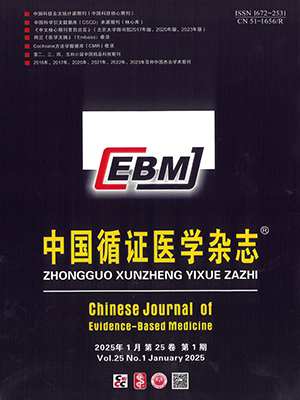| 1. |
中华人民共和国卫生部. 《中国出生缺陷防治报告(2012)》问答. 中国实用乡村医生杂志, 2012, 19(20): 3-5.
|
| 2. |
Bussé AML, Hoeve HLJ, Nasserinejad K, et al. Prevalence of permanent neonatal hearing impairment: systematic review and Bayesian meta-analysis. Int J Audiol, 2020, 59(6): 475-485.
|
| 3. |
Morton CC, Nance WE. Newborn hearing screening-a silent revolution. N Engl J Med, 2006, 354(20): 2151-2164.
|
| 4. |
Wang Q, Xiang J, Sun J, et al. Nationwide population genetic screening improves outcomes of newborn screening for hearing loss in China. Genet Med, 2019, 21(10): 2231-2238.
|
| 5. |
聂文英, 戚以胜. 超越新生儿听力筛查. 听力学及言语疾病杂志, 2007, (2): 107-110.
|
| 6. |
中华人民共和国卫生部. 新生儿听力筛查技术规范(卫妇社发〔2010〕96号). 中国儿童保健杂志, 2011, 19(6): 574-575.
|
| 7. |
Olusanya BO, Davis AC, Hoffman HJ. Hearing loss grades and the International classification of functioning, disability and health. Bull World Health Organ, 2019, 97(10): 725-728.
|
| 8. |
吴皓, 黄治物. 婴幼儿听力损失诊断与干预指南. 中华耳鼻咽喉头颈外科杂志, 2018, 53(3): 181-188.
|
| 9. |
文铖, 黄丽辉, 解舒婷, 等. 中国部分地区新生儿耳聋基因筛查现况调查. 临床耳鼻咽喉头颈外科杂志, 2020, 34(11): 972-977.
|
| 10. |
Dai P, Huang LH, Wang GJ, et al. Concurrent hearing and genetic screening of 180 469 neonates with follow-up in Beijing, China. Am J Hum Genet, 2019, 105(4): 803-812.
|
| 11. |
戴朴, 袁永一. 耳聋基因筛查与诊断临床解析. 北京: 人民卫生出版社, 2020.
|
| 12. |
王秋菊. 新生儿聋病基因筛查—悄然的革命. 听力学及言语疾病杂志, 2008, (2): 83-88.
|
| 13. |
孙磊, 郭玲. 济宁市30万例耳聋基因普遍筛查的随访研究. 中华耳科学杂志, 2019, 17(5): 676-680.
|
| 14. |
Guo L, Xiang J, Sun L, et al. Concurrent hearing and genetic screening in a general newborn population. Hum Genet, 2020, 139(4): 521-530.
|
| 15. |
姚聪, 胡艳玲, 周爱芬, 等. 武汉市部分新生儿耳聋基因与听力联合筛查结果分析. 听力学及言语疾病杂志, 2018, 26(1): 5-7.
|
| 16. |
Yang JJ, Tsai CC, Hsu HM, et al. Hearing loss associated with enlarged vestibular aqueduct and Mondini dysplasia is caused by splice-site mutation in the PDS gene. Hear Res, 2005, 199(1-2): 22-30.
|
| 17. |
Wei Q, Xu D, Chen Z, et al. Maternally transmitted aminoglycoside-induced and non-syndromic hearing loss caused by the 1494C>T mutation in the mitochondrial 12S rRNA gene in two Chinese families. Int J Audiol, 2013, 52(2): 98-103.
|
| 18. |
Shearer AE, Shen J, Amr S, et al. A proposal for comprehensive newborn hearing screening to improve identification of deaf and hard-of-hearing children. Genet Med, 2019, 21(11): 2614-2630.
|
| 19. |
戴朴, 袁永一. 基于基因筛查和诊断的耳聋出生缺陷三级预防. 中华耳鼻咽喉头颈外科杂志, 2013, 48(12): 973-977.
|
| 20. |
孙毅, 刘雅琳, 刘晓莉, 等. 山东省9147例新生儿耳聋基因和听力联合筛查结果分析. 听力学及言语疾病杂志, 2020, 28(5): 510-514.
|
| 21. |
陈凯, 秦刚. 先天性巨细胞病毒感染筛查策略的研究进展. 中国病毒病杂志, 2021, 11(1): 70-73.
|




